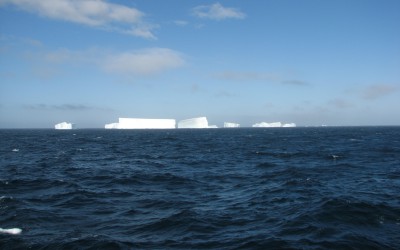
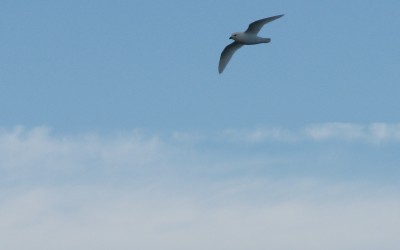
Sunday, December 28, 2008
We got some bad, but not totally unexpected, news this morning. Because we were sailing straight into the wind and the swells, we had slowed down, and now likely would not get to the South Orkneys until after dinner, as opposed to before lunch. Moreover, more of the same was expected on our path to Antarctica. Several people were visibly upset when they found out that we wouldn't get into Antarctica until the 31st, and needed to turn around and leave on the 1st. It is quite a long "Antarctic" cruise to spend less than 2 days in Antarctica. Whatever - nothing we can do about it. At least we've had good weather and good landings in the Falklands and South Georgia.
The swell was less than the day before, and the weather was sunny, but we stayed inside and worked on the journal, read, played Scrabble, and chatted with others. Nothing particularly interesting.
 |
 |
About 5pm Anja came over the intercom to tell us that there were icebergs (from Antarctica) outside. She emphasized "from Antarctica" because one of the passengers insisted today that the icebergs we saw in South Georgia the other day were from glaciers, not from the ice shelves of Antarctica. There are two reasons this is facially presposterous. One, some of those pieces are bigger than any of the glaciers we saw. Two, the tabular-shaped pieces wouldn't match up with the glaciers - none of the glaciers could generate a piece of ice that flat. In addition to the glaciers and icebergs (from Antarctica), we also saw some whale spouts off in the distance.
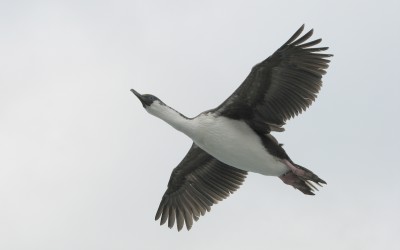 |
 |
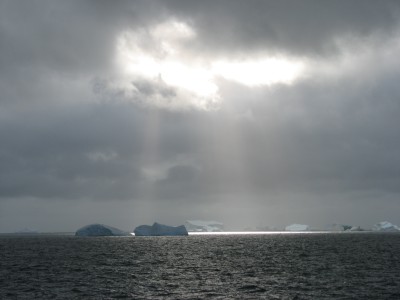 |
It was extremely cold outside, especially when we were facing the wind. the scenery was very nice, but we didn't wait too long before going inside to put on something warmer. Justin came back out and took more photos and video - Crystal stayed warm inside. Outside there were some birds we hadn't seen much of - snow petrels and cormorants. We had seen the flightless cormorants in the Galapagos, but these were the first flying ones we could remember seeing.
The South Orkneys are really in the middle of nowhere (much like everywhere else on our trip). They are halfway between South Georgia and the Antarctic peninsula, at least 72 hours from Ushuaia. There is some dispute as to who owns them - the British or the Argentines. The base there, however, is firmly Argentine. Orcadas is the oldest continually operated Antarctic base, going back to 1904. The Argentines have naval officers staff it. They get a better salary than those stationed elsewhere, and they have no place to shop or spend money, so they probably take home quite a bit. On the downside, however, there are no women. But they do have DirecTv.
 |
|
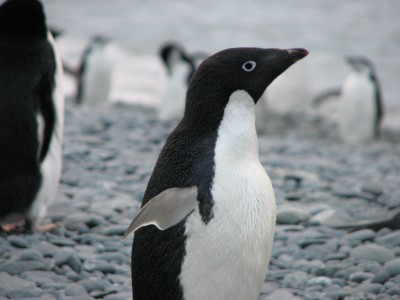 |
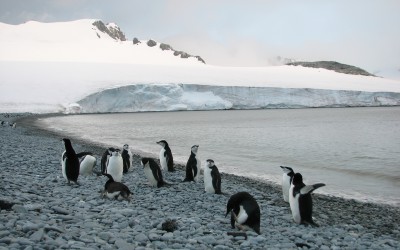 |
The conditions for our landing at Orcadas were perfect - there were some clouds for background color, almost no wind, and while it was cold the lack of wind kept it comfortable. As soon as we got off the zodiac, there were Adelies, Chinstrap, and Gentoo penguins on the rocky beach. While we had seen Gentoos all over, this was the first time seeing Chinstraps up close (we had only seen them on floating icebergs in Cooper Bay), and the first time seeing Adelies at all. There was also a lone fur seal - not so tough when he didn't have any backup. There was also some snow algae.
 |
 |
 |
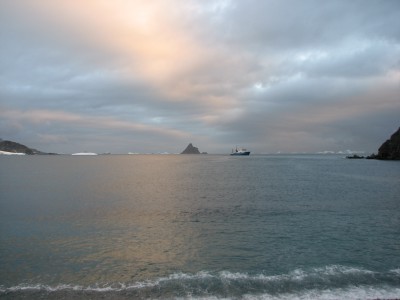 |
The base is on a small isthmus of Laurie Island - there are bays on either side of it. On the side where we landed (Uruguay Bay), there were barely any waves, and no ice. On the other bay, though, there were some decent-sized waves and the whole area around the bay had ice chunks going back at least 50 meters from shore. Out on some of the ice chunks were Weddell Seals - the first time we had seen them. They weren't close enough for us to make out any features, though.
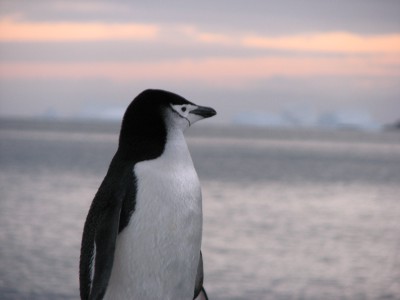 |
 |
 |
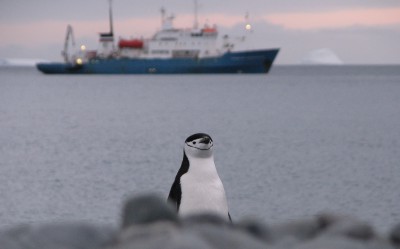 |
People from the base were more than willing to stay late on a Sunday night to meet with us - they get almost no visitors. Seriously, almost none. They get provisions between 1 and 3 times a year, so these cruise ships are basically the extent of their visitors for the year. They showed us around the base - there isn't much. The purpose of the base is to take meteorological and seismic data - it doesn't seem like that would take up anywhere close to 8 hours a day. Thank goodness for television. They were very welcoming, and even gave us some birthday cake - it was the birthday of one of the staff members there.
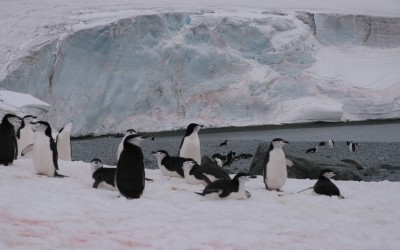 |
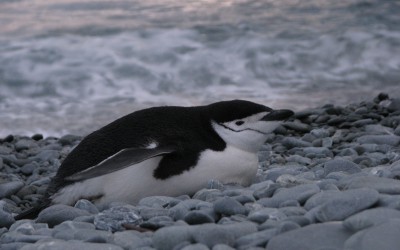 |
Back on the boat, since it was still, we decided to have a drink. We've had hardly any alcohol on the ship, because 1) we figure it doesn't help as far as not being seasick, and 2) being intoxicated on a vessell that moves side to side and up and down seems like it might lead to accidents. Anyway, we toasted to seeing all the penguin species possible on this trip. We've seen Rockhoppers (Falklands), Magellanic (Falklands), Gentoo (everywhere), King (South Georgia and the lone one in Stanley), Macaroni (South Georgia), Chinstrap (Orkneys and South Georgia icebergs), and Adelies (Orkneys). Crystal likes the Chinstraps because they appear to her as though they are wearing a black helmet held in place by a strap. Justin doesn't have a favorite, but he does appreciate that all the pictures he has taken of the Gentoos seem to have turned out well.
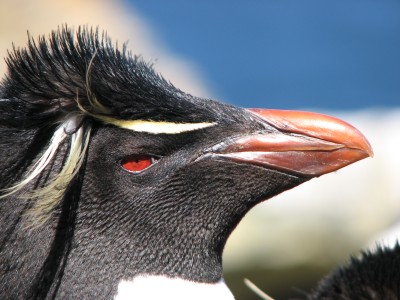 |
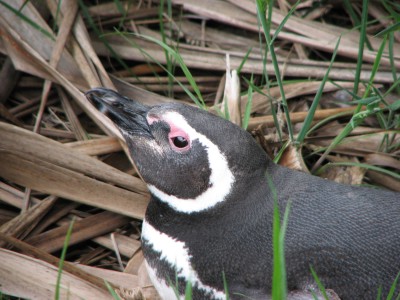 |
 |
 |
 |
 |
 |
Around midnight we raised the anchor and set off to the Antarctic peninsula, hoping for smooth, fast, sailing.